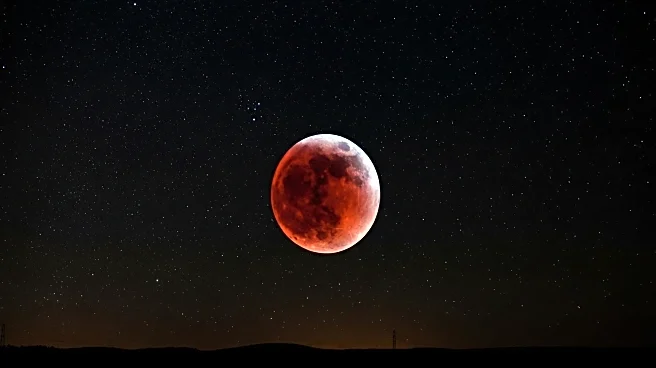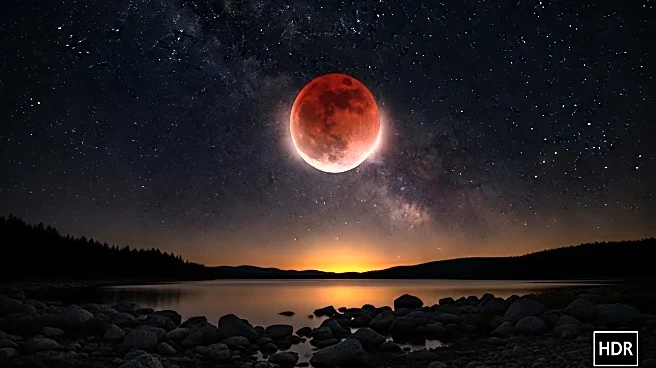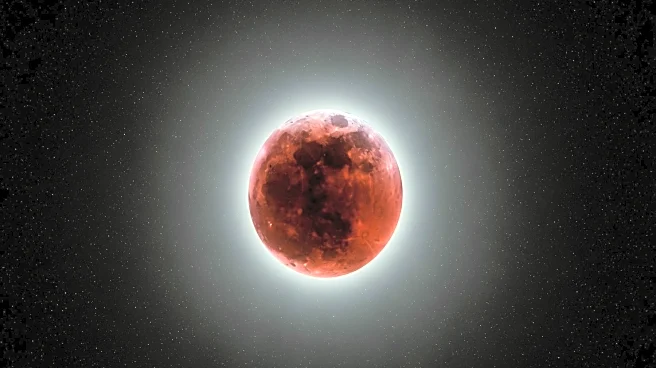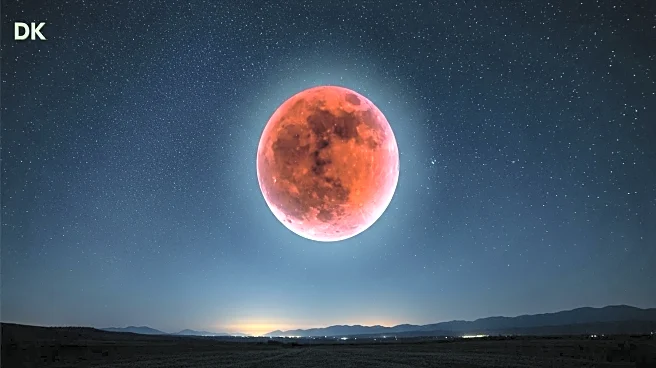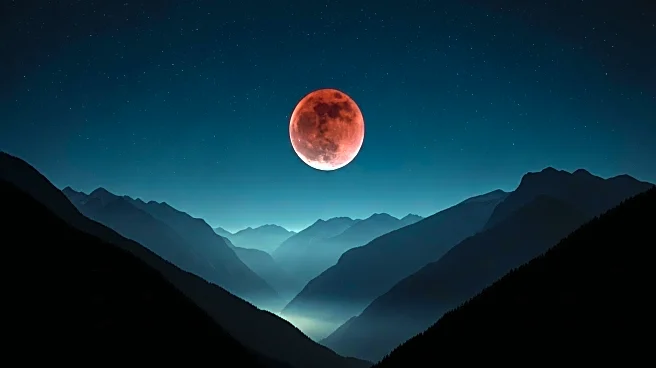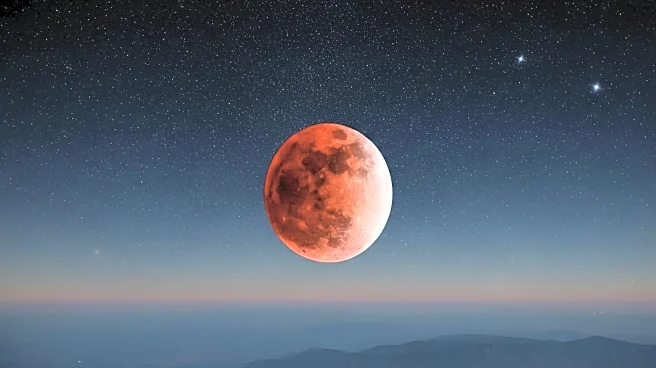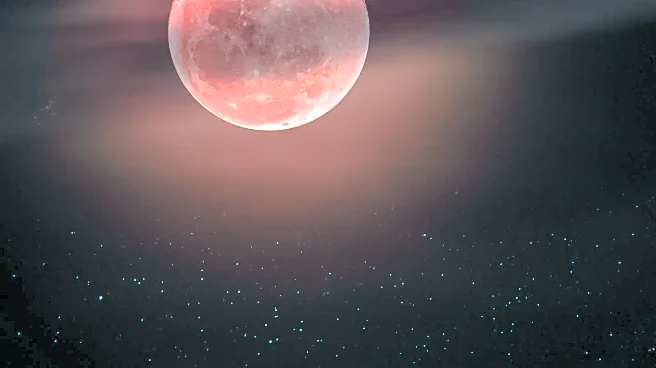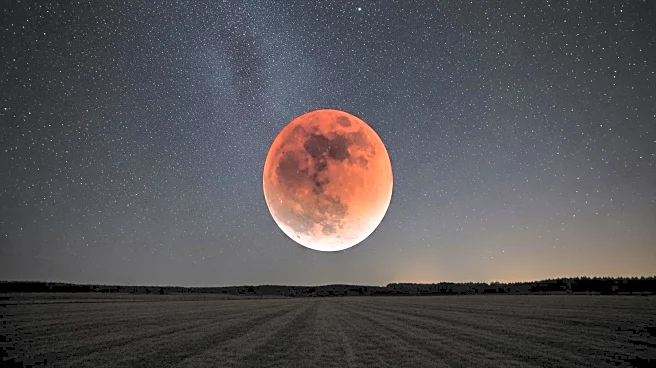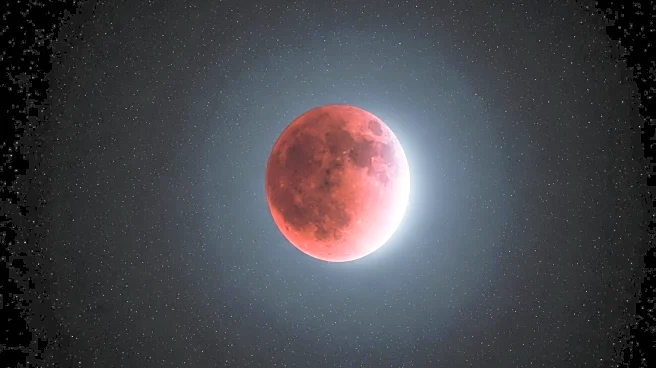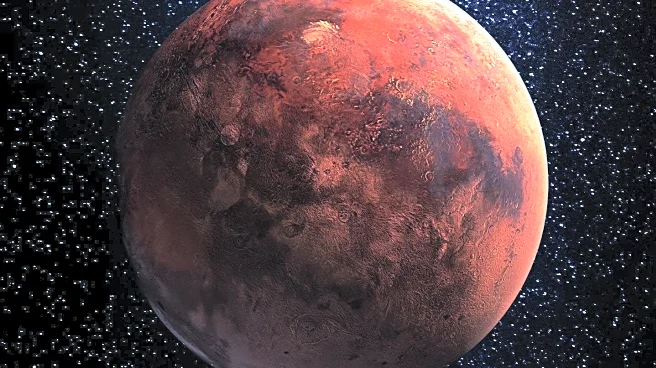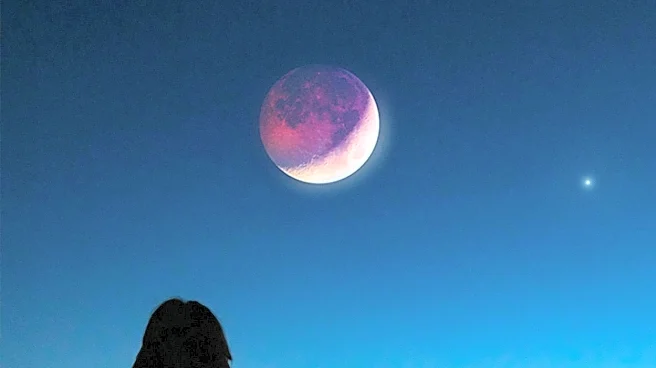What's Happening?
On September 7-8, 2025, a total lunar eclipse, referred to as the Blood Moon, will occur, offering a spectacular view to skywatchers across Asia, Europe, Africa, and Australia. The eclipse will not be visible in the Americas. During this event, Earth's shadow will completely cover the Moon, resulting in a reddish glow due to Rayleigh scattering. The eclipse's totality phase will last 82 minutes, making it one of the most striking lunar eclipses of the decade. The Moon will appear larger and brighter as it occurs close to its perigee, the closest point to Earth.
Why It's Important?
This lunar eclipse is notable for its extensive visibility, reaching nearly 85% of the world's population. It provides a unique opportunity for educational outreach and public engagement in astronomy. The event's timing, just days before the Moon's perigee, enhances its visual impact, making the Moon appear larger and more vibrant. The Blood Moon serves as a reminder of the natural beauty and scientific principles governing celestial phenomena, fostering interest and appreciation for astronomy.
What's Next?
For those unable to view the eclipse in person, live streaming options are available through platforms like The Virtual Telescope Project and Time and Date. These streams allow global audiences to experience the event from the comfort of their homes. The next opportunity for a total lunar eclipse visible in the Americas will be on March 3, 2026.
Beyond the Headlines
The Blood Moon's vivid appearance often sparks cultural and artistic interpretations, reflecting humanity's enduring fascination with the cosmos. While the eclipse is a scientific event, its visual impact can inspire creative expressions and cultural narratives, highlighting the intersection of science and culture.
